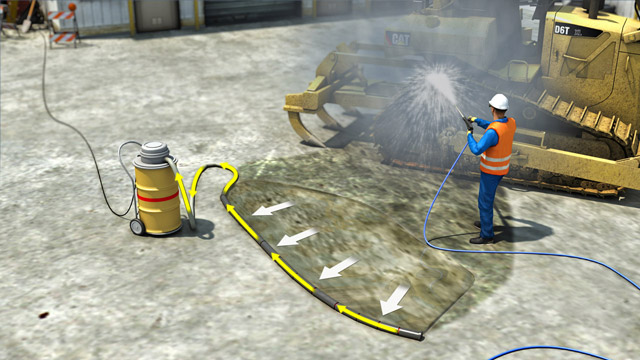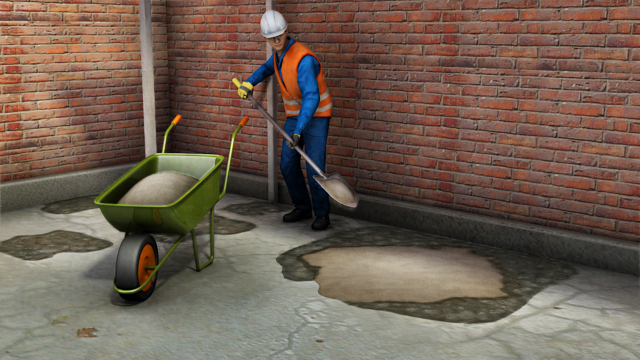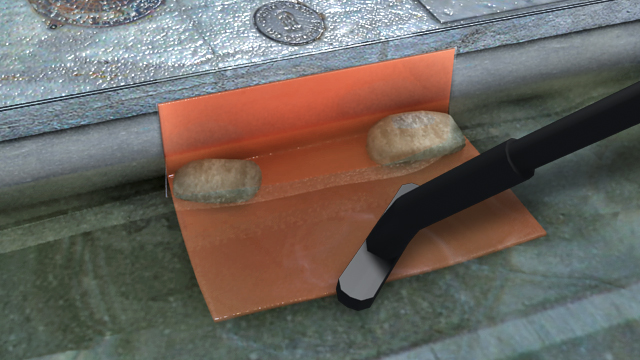




Pressure Washing Best Management Practices
Pressure washing generally refers to the practice of using water sprayed through a nozzle at high pressure to clean or strip material from various surfaces. This technique typically produces contaminated wastewater that can flow into a nearby waterway without proper intervention. This course describes pressure washing best practices and steps to take to avoid polluting open water.
Request a demoCourse Details
Learning Objectives
• Define pressure washing • Describe the equipment used for pressure washing • Describe some of the hazards present during pressure washing • Describe the primary environmental hazard posed by pressure washing • List some best management practices to mitigate the environmental impact of pressure washing • List some of the techniques used to increase the efficiency of pressure washing • Describe some methods of wash water collection • Describe some methods of wastewater disposal
Specs
| Course Level | Intermediate |
| Languages | English |
| Compatibility | Audio, Video |
| Based on: | Industry Standards and Best Practices |
Key Questions
What is pressure washing?
Pressure washing is the practice of using a high pressure, high velocity stream of water to clean a variety of surfaces.
Why should pressure washing waste water not be allowed to go into storm drains?
Pressure washing waste water usually contains pollutants which must not be allowed to flow into rivers and lakes. Storm sewers drain directly into these bodies of water, so waste water must be keep from entering these drains.
What is the greatest safety hazard posed by pressure washers?
The high velocity stream of water exiting a pressure washer nozzle has the ability to abrade, or depending on the pressure, even penetrate skin.
In addition to collecting waste water what important step can reduce the environmental impact of pressure washing?
Pre-cleaning, for example removing collected grease and oil from pavement prior to pressure washing that surface, can greatly reduce the level of pollutants in the waste water.
Why can some pressure washing waste water go into a sanitary sewer, but not into a storm sewer?
Water collected by sanitary sewers receives treatment before being discharged into lakes and rivers. For some jobs, this treatment is sufficient to clean up pressure washer waste water
Sample Video Transcript
Pressure washing generally refers to the practice of using high pressure water flowing at high velocity through a handheld wand and nozzle to clean a variety of surfaces. The mass and velocity of the water provide an effective cleaning mechanism for quickly and efficiently removing material such as paint, grease, mold, and dirt from a variety of surfaces. Pressure washing is particularly useful for cleaning irregularly shaped or textured surfaces. One difficulty with this technique is that it generates a volume of water which is contaminated with the undesirable substances which were removed during washing. Without intervention, the pollutants in this water will eventually make it into a nearby waterway. This is bad for the environment and also illegal in the United States. This module will introduce the topic of pressure washing and cover how to accomplish it in a safe and environmentally friendly manner.
Additional Resources
- Occupational Safety and Health Administration (OSHA) – www.osha.gov
- OSHA Decontamination – https://www.osha.gov/SLTC/hazardouswaste/training/decon.html
- Environmental Protection Agency (EPA) – www.epa.gov
- EPA Water Pollution Prevention & Control – http://water.epa.gov/polwaste/
Demos + Pricing
Learn more about our courses, get pricing, and see our platform.











